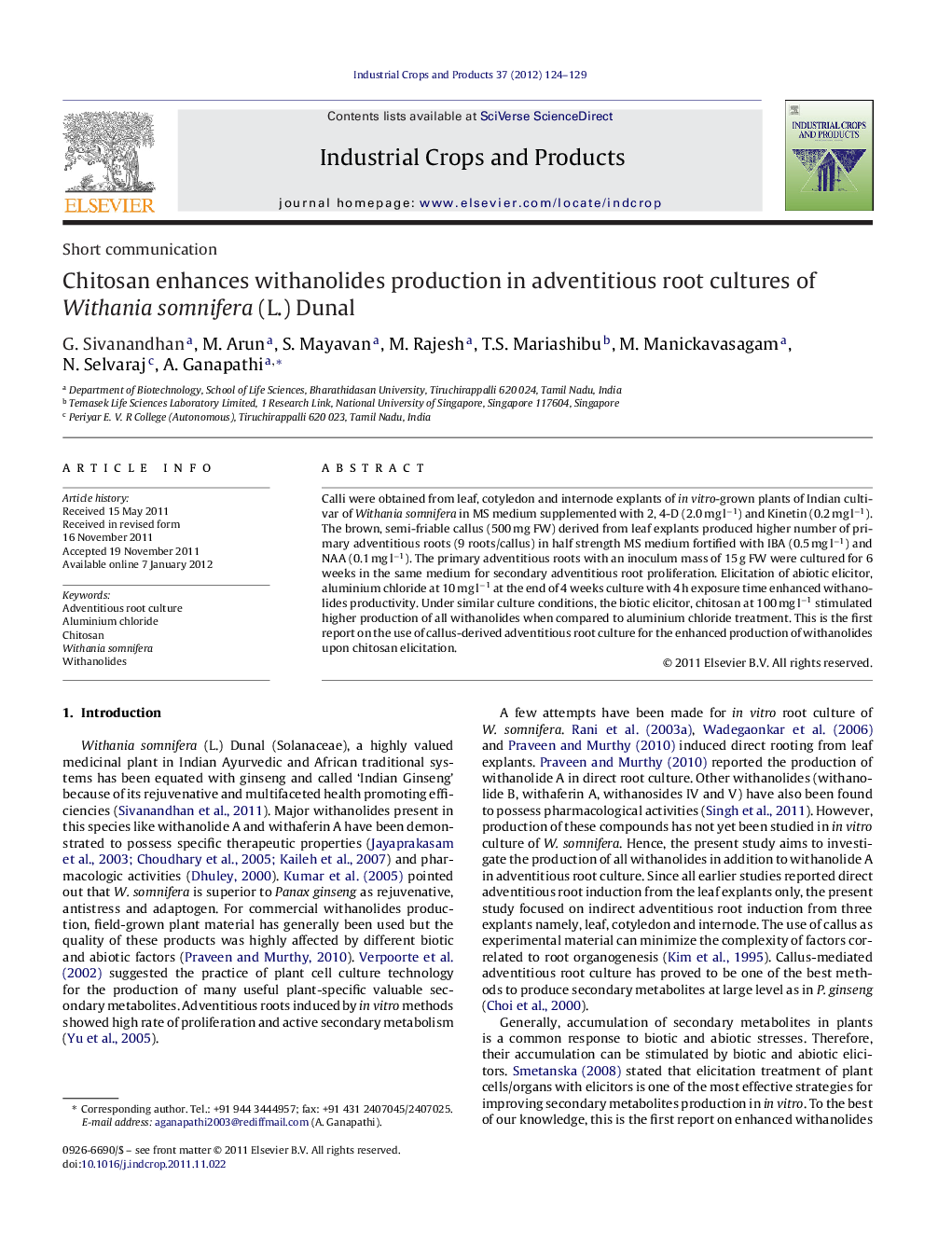| Article ID | Journal | Published Year | Pages | File Type |
|---|---|---|---|---|
| 4514206 | Industrial Crops and Products | 2012 | 6 Pages |
Calli were obtained from leaf, cotyledon and internode explants of in vitro-grown plants of Indian cultivar of Withania somnifera in MS medium supplemented with 2, 4-D (2.0 mg l−1) and Kinetin (0.2 mg l−1). The brown, semi-friable callus (500 mg FW) derived from leaf explants produced higher number of primary adventitious roots (9 roots/callus) in half strength MS medium fortified with IBA (0.5 mg l−1) and NAA (0.1 mg l−1). The primary adventitious roots with an inoculum mass of 15 g FW were cultured for 6 weeks in the same medium for secondary adventitious root proliferation. Elicitation of abiotic elicitor, aluminium chloride at 10 mg l−1 at the end of 4 weeks culture with 4 h exposure time enhanced withanolides productivity. Under similar culture conditions, the biotic elicitor, chitosan at 100 mg l−1 stimulated higher production of all withanolides when compared to aluminium chloride treatment. This is the first report on the use of callus-derived adventitious root culture for the enhanced production of withanolides upon chitosan elicitation.
Graphical abstractFigure optionsDownload full-size imageDownload as PowerPoint slideHighlights► Adventitious root induction from calli of Withania somnifera was manipulated to produce withanolide A, withanolide B, withaferin A, withanoside IV and withanoside V. ► Aluminium chloride and chitosan treatments lead the accumulation of withanolides production in adventitious root culture. ► Inoculum mass, exposure time and culture age influence the withanolides production in W. somnifera.
